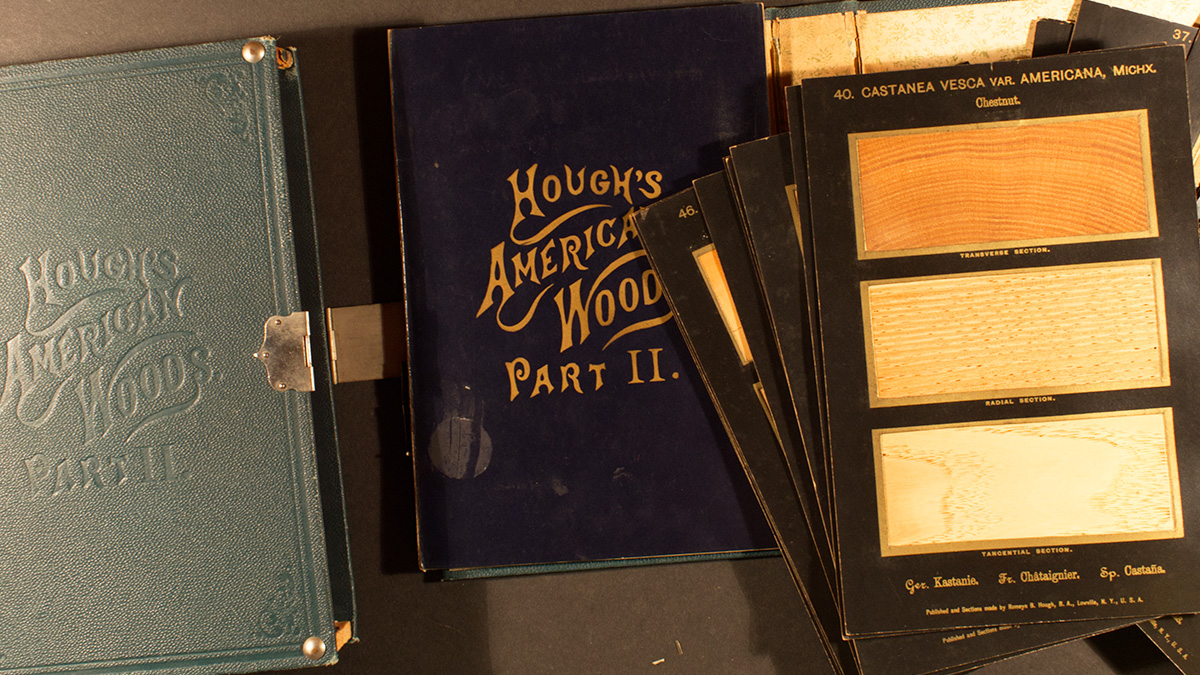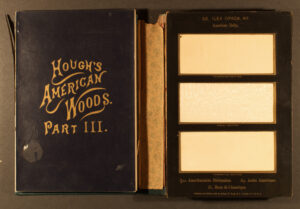
The outer casing of The American Woods, Volume 2, alongside a look at the interior unbound plates of tree specimens.
A View from the Vault: Romeyn Beck Hough’s The American Woods
By Jaime Margalotti, Special Collections
“A View from the Vault” is a new series that showcases some of the unique, notable or rare items that are a part of the Special Collections and Museums holdings at the University of Delaware. Each month, we will highlight a different work and share interesting facts or intriguing histories about it. If you are interested in seeing any of the materials featured in person or want to learn more about any work showcased in the series, please contact Special Collections and Museums at AskSpec or AskMuseums.

The interior casing of The American Woods and an unbound plate of thinly sliced tree specimens.
The American Woods
Romeyn Beck Hough and Marjorie G. Hough
Horticulture Collection – SD536 .H83x 1894
In celebration of Arbor Day–a secular American holiday marked by the planting, caretaking and preserving of trees–we’re spotlighting American physician and botanist Romeyn Beck Hough (1857-1924) and his unique arboreal work The American Woods. When on the shelf, each volume resembles an ordinary book, but when the outer casing is unlatched, a set of unbound plates is revealed. Each plate features three 0.021 mm wide translucent veneers of a particular tree species visible through a window-mount as well as text giving scientific information about the tree.
Hough devised and patented the process of cutting the impressively thin and sturdy samples several years prior, initially gaining commercial success by selling the novelty product for use as slides or as business and greeting cards. From 1888-1913, Hough produced 13 volumes, with a 14th completed by his daughter, Marjorie Galloway Hough, after his death.
Hough’s extensive work contains a total of 1,056 slices of 354 sample trees. You can find Delaware’s state tree, the American Holly (Ilex opaca), in Volume 3. Several trees represented in The American Woods, like the American Chestnut (Castanea dentata), are now endangered or extinct, making the work valuable to botanists, ecologists and even those who study the decorative arts.
